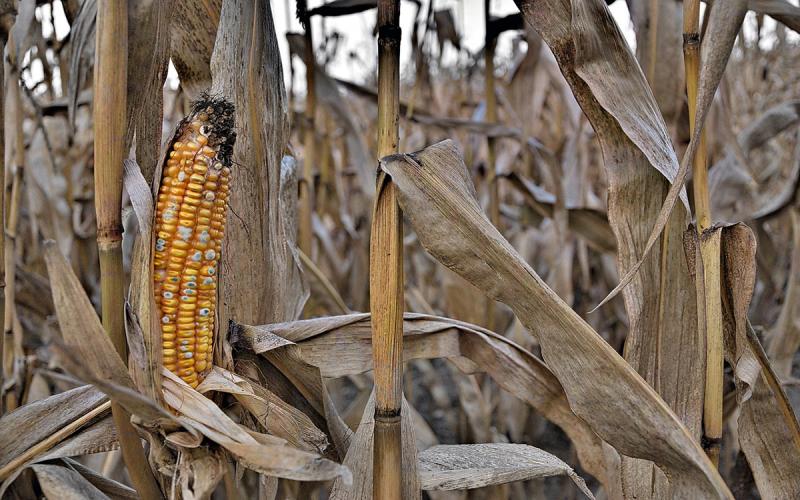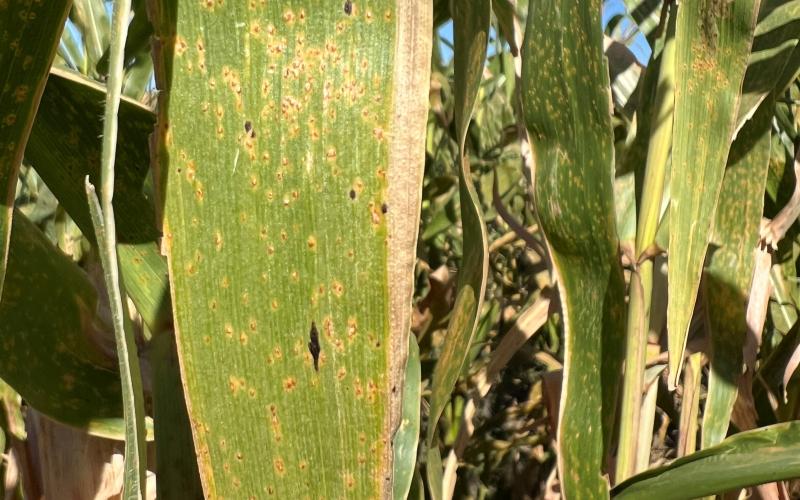Written collaboratively Madalyn Shires, Connie Strunk, Dalitso Yabwalo, Connie Tande, and Cody Molnar.
Tar Spot
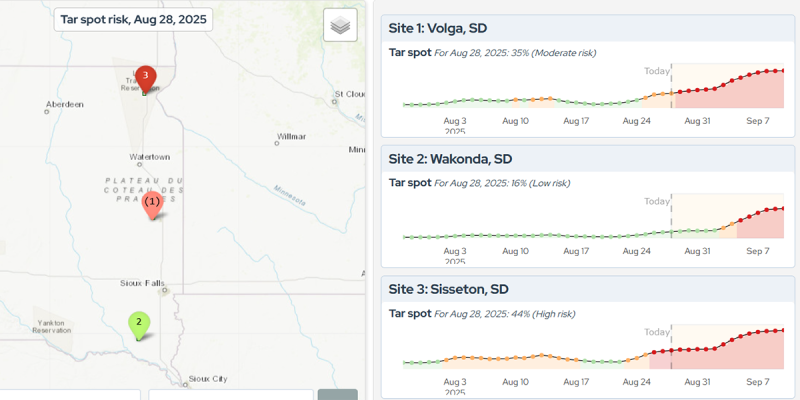
Development and spread of Tar Spot continues to be slow. Currently, we are only seeing high disease incidence in isolated areas in the SE part of the state. However, it is likely that we are going to see rapid spread of the disease in the month of September due to forecasted weather conditions (Figure 1). While this can be alarming, most corn is at or approaching R3 (milk) stage and will not be negatively impacted by tar spot infecting corn plants.
In 2024, we observed no yield loss due to tar spot development in September/October 2024, in any of the 46 South Dakota counties confirmed with some level of the disease. Confirmed tar spot counties for 2025 include: Brookings, Deuel, Grant, Minnehaha, Lincoln, Union, Clay, Yankton, and Bon Homme counties with a suspected sample from Turner County.
Southern Rust
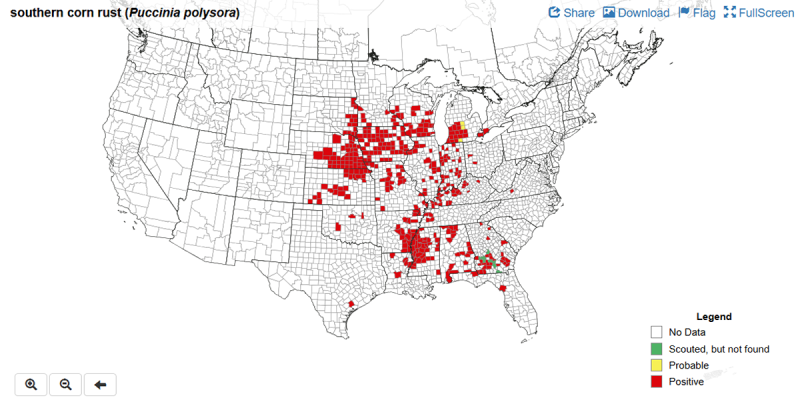
Unlike 2024, southern rust began showing up in some SD corn fields in mid-July 2025 and some producers have had to make fungicide applications. Southern rust has been severe and widespread across the Midwest this year (Figure 2) and we are seeing it continue to increase in severity here in South Dakota.
Southern rust has been observed in the fields of most of the eastern counties. This disease can cause yield loss if the severity becomes high at or before R3 (milk) so fungicide applications may be warranted. Thirty percent of leaf disease incidence is one threshold that can be used.
Other Diseases
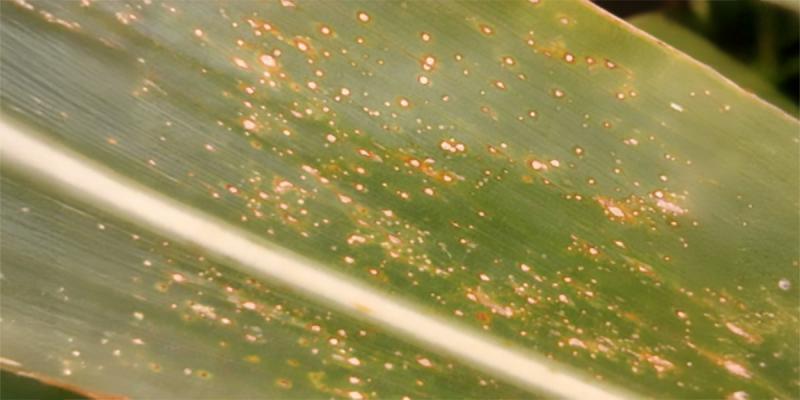
We are observing high amounts of common rust in fields. It is important to verify which rust is causing disease symptoms in a field before making a fungicide application as common rust rarely reduces yield.
Northern corn leaf blight and Goss’s Wilt are being observed widely in the eastern part of the state but at mostly low severity. Grey leaf spot has also been problematic with some producers making fungicide applications to reduce disease load.
Finally, we have received several samples suspected of Curvularia leaf spot (Figure 3). This disease has also been widespread in the Midwest.

